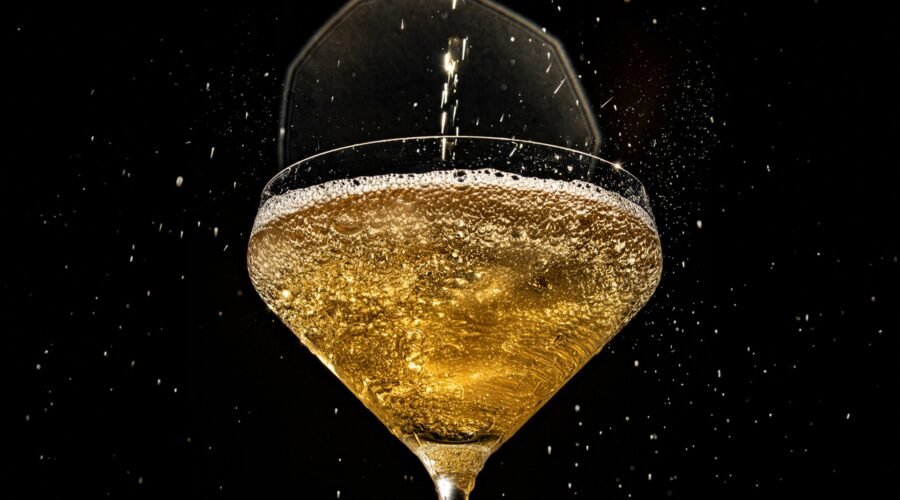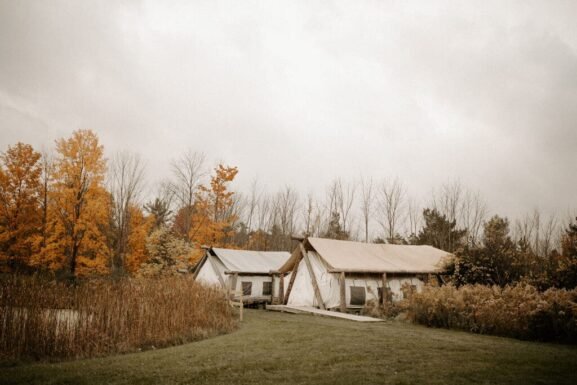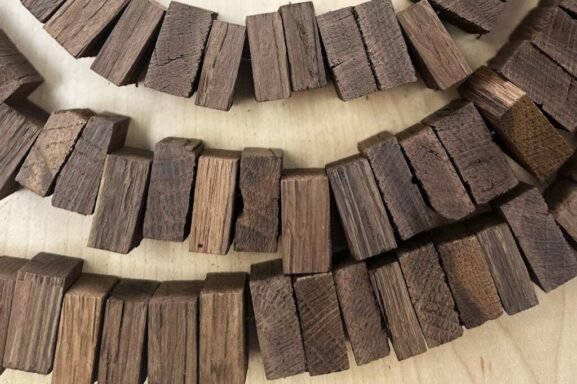Sparkling Riesling’s Ascent | Wine Enthusiast
As global wine consumption continues to decline, many wonder if the drink’s millennia-long party may be drawing to a close.
Well, not if sparkling Riesling has anything to do with it. It fizzed up first in the grape’s native terroir, Germany, but sparkling Riesling has also found a home in the Finger Lakes, Willamette Valley and beyond, with producers and fans finding that it offers the flavor, fun, complexity and flexibility that wine culture can sometimes lack.
“Sparkling Riesling is unique in the fizz world,” says Stefan Braunewell, third-generation proprietor of Weingut Braunewell in Rheinhessen, Germany. “You will never find the combination of pure life, easy drinkability and high quality together in one bottle that you do in a sparkling Riesling.”
Sparkling Riesling is also highly ageable, naturally lower in alcohol and generally far easier on the wallet than comparably produced sparkling wines from California, or Champagne.
But Riesling is a notoriously misunderstood and underappreciated grape, making its rise in sparkling form logical from a style and substance standpoint, but completely unexpected based on its false reputation as a one-dimensional sweet wine.
Why Sparkling Riesling Is Surging
Why is everyone dressing naked? Why are swicy ingredients—hot honey, spicy pineapple—appearing on everyone’s plate? Sourcing the spark that ignites a trend, while instructive when successful, is often impossible.
In the case of the sparkling Riesling movement, the producers that are in the midst of it are just happy it’s here.
“When we started making a Riesling Pét Nat in 2016, it took off like a rocket,” says Dave Pittard, co-owner of Buttonwood Grove Winery in the Finger Lakes. “I’ve been surprised to see how broad the embrace is, too. I would have pegged it for a Brooklyn hipster wine, but our older wine club members are loving it. It consistently sells out.”
Buttonwood has increased production by about 5-10% every year since release, and sees that continuing as it generally sells out quickly. (That may not sound like huge growth, but considering the fact that wine consumption declined last year by 3.4%, it’s impressive).
Different Methods for Diverse Bubbles
Pittard is also preparing to release a méthode Champenoise Riesling this year.
“We have done a forced carbonation Riesling previously, and while I love many of the forced carbonated Rieslings my colleagues do, I personally am invested in the méthode Champenoise because it’s lower intervention and more inherently natural,” Pittard explains.
“I’m excited to see what the longer aging and refinement on the lees will do to the Riesling,” he adds. “The Pét-Nat has sediment in the bottle, so while it’s fun, vibrant and maintains incredible acidity, it is also chewy and rustic, which actually makes it perfect for pairing with food. I’m excited to see the elegance the traditional method brings.”
The method a sparkling wine is made in often has an outsize effect on its taste. Pét-Nats (or Pétillant Naturel) is the most ancient form of sparkling wine. It is made with just a single fermentation, while méthode Champenoise sparkling wines involve a second fermentation within the bottle. Forced carbonation sparkling wine (also known as Charmat), meanwhile, involves injecting CO2 into still wine in tanks or kegs, where it undergoes a second fermentation.
Claire Jarreau, winemaker at Brooks Wine in Oregon’s Willamette Valley, says she has been thrilled to see sparkling Riesling “finally” get the reception she thinks it deserves.
“When we released our first traditional method sparkling Riesling in 2015, there was a lot of wine geek and sommelier demand, but now we are seeing incredible traction in our tasting room, wine wine bars and restaurants and in our wine club,” Jarreau says. “It is definitely having a moment.
Sparkling Riesling’s Time To Shine
But why today (and arguably, tomorrow)? Climate change and an official recognition of the category in its country of origin helped cast Riesling in its starring role.
“Riesling is a lot more disease resistant than other grapes often used for sparkling wine and it’s late-ripening, so it’s suited well for our climate in the Finger Lakes,” says Craig Hosbach, head winemaker for Fox Run Vineyards in the Finger Lakes. “Overall, Riesling can also maintain higher acid levels than other grapes too, which is great for sparkling wine, where brightness is key.”
At Dr. Konstantin Frank Winery vintner Eric Bauman says the Finger Lakes producer made their first sparkling Riesling in 1989. He predicts that it will continue to blossom as both a climate- and market-friendly variety.
“We can harvest our Riesling for sparkling a few weeks earlier, which means there’s even less mildew and disease pressure if we get hit with rain,” says Bauman. “We should be focusing more on sparkling Riesling here in New York because not only does it avoid weather issues, it is naturally lower in alcohol; it’s bright, which makes it fresh on release, and at the same time ageable.”
Germany’s ‘Sekt Revolution’
Sparkling Riesling’s auspicious flexibility in the vineyard and cellar certainly help producers and wine enthusiasts, but its recognition as a category on its own by the Verband Deutscher Prädikatsweingüter (VDP) helped bring the category a much-needed official champion. The VDP is an independent German wine body that officially determines the quality levels of wine, including sparkling wine (also known as or Sekt), that can be claimed on wine labels.
In 2018, the VDP introduced a Sekt Statut declaring that the grapes must be sourced from a winemaker’s estate and aged for 24 months on the lees, and that wines at the highest level, known as Prestige, must be aged for 36 months on the lees.
“The Sekt Revolution currently taking place in Germany is easily one of the most exciting topics in the wine world,” says Jenna Fields, president of the wine import company, the German Wine Collection. “Despite Germany consuming more sparkling wine than any other country, there has never been a set of laws designed to elevate the quality bubbles being produced within the country.”
The dramatic increase in quality has caused many restaurants to expand their Champagne Selection with a Sekt Section, Fields adds. She mentions Aldo Sohm Wine Bar, One White Street and Delmonico’s in New York as being particularly auspicious restaurant partners.
Winemakers like Mathieu Kauffmann, Volker Raumland and Hansjörg Rebholz have led the charge in helping create the VDP Sekt Statut.
“In the process, they’ve shown Champagne lovers around the world that German Sekt deserves a place on every top restaurant list,” Fields adds. “They represent incredible value in the glass, and this is just the beginning for the quality Sekt category in the US.”
For The German Wine Collection’s stable of producers, she says news of the VDP’s recognition, and the corresponding increase in interest among top German producers eager to produce a top-rate sparkling Riesling has led to a drastic increase in availability here.
In 2020, the German Wine Collection sold 500 bottles of sparkling Riesling, with just four separate bottlings available for purchase. Last year, 5,000 bottles across 12 SKUs were sold, a 900% increase in volume, and 200% increase in bottlings.
Fields plans to bring in even more this year.

What Will You Find in a Glass of Sparkling Riesling?
Most of our palates are primed for Champagne (citrus, orchard fruit, brioche) and Prosecco (sweeter citrus and orchard fruit, honeydew melon) these days. Sparkling Riesling though?
As Pittard noted, the method it is made in will have an effect. A Pét-Nat will be rougher around the edges, a Charmat will be slightly sweeter and a traditional method will be inherently more refined and restrained, drier.
But at its core is bright, laser-like acidity.
“Sparkling Riesling today reminds me of what Chardonnay once was in the Cote de Blanc at harvest,” says Mathieu Kauffmann, who is in charge of winemaking and vineyard care at Karthäuserhof in Germany’s Mosel region, and previously worked as chef de cave at Champagne Bollinger. “I think it has enormous potential to deliver long-term, even with climate change, bright flavors that reflect the terroir the grapes are grown in. It’s an amazing category, and very exciting to see it develop.”
Will sparkling Riesling save the beleaguered wine industry? Let’s not get nuts.
But will it bring a whole horde of people who are either sick of the same old thing, or drawn by its bright, fizzy novelty to the bar?
Perhaps it already has.
More Riesling Coverage

From the Shop
The Best Wine Fridges
A wine fridge is the best way to ensure your wine is stored properly, and these attractive units allow you to show off your collection in style.
Published: March 27, 2025


